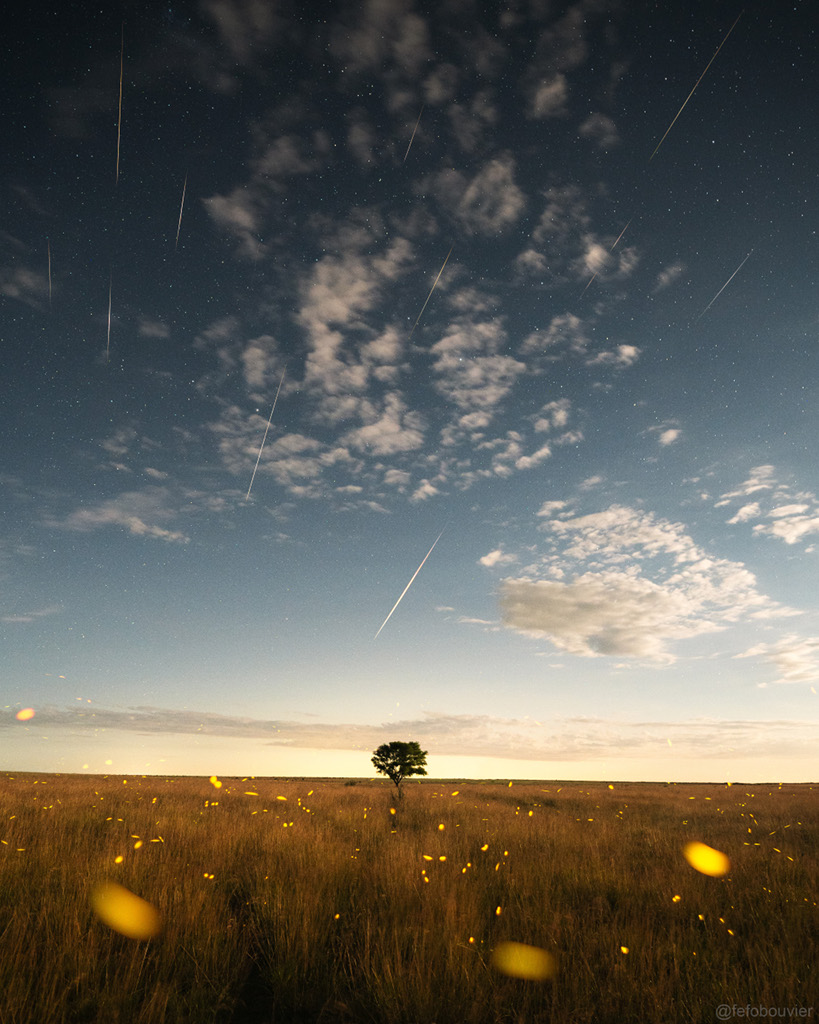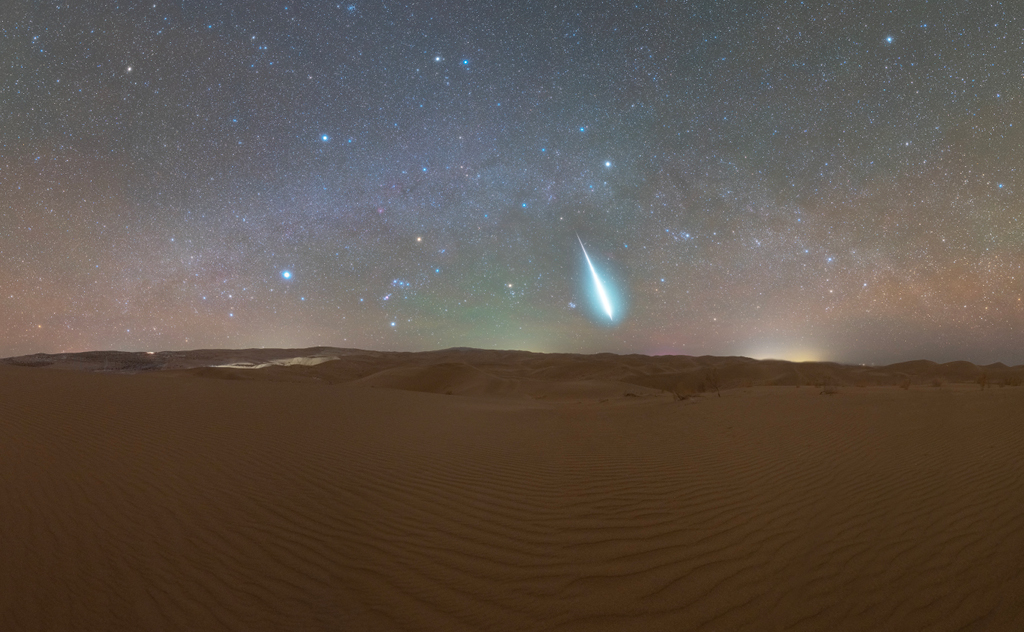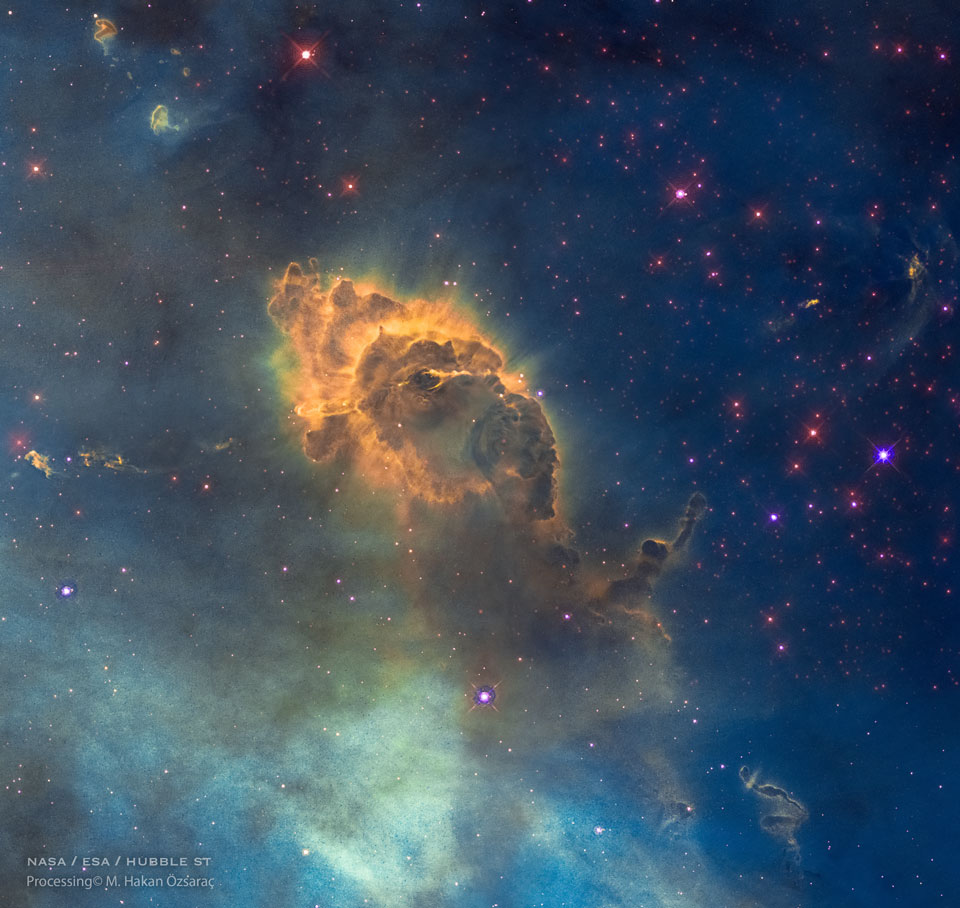Nombre total de pages vues
18/12/2021
AERONAUTIQUE - Avions de légende - Le Fokker Dr.I, l’avion du Baron Rouge
ASTRONOMY - Stephan's Quintet
2021 December 18
Image Credit: NASA, ESA, Hubble Legacy Archive;
Processing & Copyright: Bernard Miller
Explanation: The first identified compact galaxy group, Stephan's Quintet is featured in this eye-catching image constructed with data drawn from the extensive Hubble Legacy Archive. About 300 million light-years away, only four of these five galaxies are actually locked in a cosmic dance of repeated close encounters. The odd man out is easy to spot, though. The interacting galaxies, NGC 7319, 7318A, 7318B, and 7317 have an overall yellowish cast. They also tend to have distorted loops and tails, grown under the influence of disruptive gravitational tides. But the predominantly bluish galaxy, NGC 7320, is closer, just 40 million light-years distant, and isn't part of the interacting group. Stephan's Quintet lies within the boundaries of the high flying constellation Pegasus. At the estimated distance of the quartet of interacting galaxies, this field of view spans about 500,000 light-years. But moving just beyond this field, up and to the right, astronomers can identify another galaxy, NGC 7320C, that is also 300 million light-years distant. Including it would bring the interacting quartet back up to quintet status.
17/12/2021
ASTRONOMY - Geminids of the South
2021 December 16
Image Credit & Copyright: Fefo Bouvier
Explanation: Fireflies flash along a moonlit countryside in this scene taken on the night of December 13/14 from southern Uruguay, planet Earth. On that night meteors fell in the partly cloudy skies above during the annual Geminid meteor shower. Frames recorded over a period of 1.5 hours are aligned in the composite image made with the camera facing south. That direction was opposite the shower's radiant toward the north and so the Geminid meteor streaks appear to converge at an antiradiant below the southern horizon. The shower's apparent radiant (and antiradiant) is just due to perspective though. As Earth sweeps through the dust trail of mysterious asteroid 3200 Phaethon, the dust grains that create the Geminid shower meteors are really moving along parallel tracks. They enter Earth's atmosphere traveling at about 22 kilometers per second.
AERONAUTIQUE - Avions de légende - Le Stampe SV-4
ASTRONOMY - Geminid of the North
2021 December 17
Image Credit & Copyright: Alvin Wu
Explanation: An arid expanse of the Tengger Desert in north-central China, planet Earth fills the foreground of this starry scene. A widefield panoramic view, it was recorded shortly after moonset in the local predawn hours of December 14. Pictured in the still dark sky, stars of the northern winter hexagon surround a luminous Milky Way. Seen near the peak of the annual meteor shower, the startling flash of a bright Geminid fireball meteor was also captured on that night. Above the western horizon and just below bright star Capella, its dagger-like trail points back to the meteor shower's radiant in Gemini. Of course, the constellation Gemini is easy to spot. Its twin bright stars, bluish Castor and yellowish Pollux are near top center in the frame.
15/12/2021
ASTRONOMY - Comet Leonard from Space
2021 December 15
Image Credit & Copyright: Zhuoxiao Wang, Yangwang-1 Space Telescope, Origin.Space
Explanation: What does Comet Leonard look like from space? Today's featured image from Origin.Space's Yangwang-1 space telescope shows not only the currently bright comet -- but several other space delights as well. Taken in optical and ultraviolet light, C/2021 A1 (Leonard) is visible with an extended tail near the image center as it appeared five days ago. The Earth is visible on the lower right, while layers of the Earth's atmosphere glow diagonally from the lower left to the upper right. The trails of two satellites can be seen in front of a myriad of distant stars that dot the background on the upper left. The faint bands of light running diagonally from the lower right to the upper left are auroras. Finally, the image also caught a meteor streaking just below the airglow. To see Comet Leonard yourself from the Earth's surface during the next few days, look toward the western horizon just after sunset or just before sunrise.
14/12/2021
ASTRONOMY - HH 666: Carina Dust Pillar with Jet
2021 December 14
Image Credit: NASA, ESA, Hubble; Processing & Copyright: Mehmet Hakan Özsaraç
Explanation: To some, it may look like a beehive. In reality, the featured image from the Hubble Space Telescope captures a cosmic pillar of dust, over two-light years long, inside of which is Herbig-Haro 666 -- a young star emitting powerful jets. The structure lies within one of our galaxy's largest star forming regions, the Carina Nebula, shining in southern skies at a distance of about 7,500 light-years. The pillar's layered outline are shaped by the winds and radiation of Carina's young, hot, massive stars, some of which are still forming inside the nebula. A dust-penetrating view in infrared light better shows the two, narrow, energetic jets blasting outward from a still hidden infant star.
AERONAUTIQUE - Avions de légende - Le Messerschmitt Bf 109
13/12/2021
ASTRONOMIE - Cette nuit, une pluie d'étoiles
Bien qu'il fasse froid, les longues nuits de décembre sont resplendissantes (surtout cette année avec des planètes alignées et une comète) et réservent de beaux spectacles célestes. Parmi eux figurent les Géminides. Une pluie d'étoiles filantes qui s'étend du 19 novembre jusqu'à la veillée de Noël, et est unanimement considérée comme l'une des plus belles, si ce n'est LA plus belle de l'année ! Lors de son pic d'activité, attendu vers le 13-14 décembre, le nombre de météores plongeant dans l'atmosphère peut dépasser les 60 en une heure !
SANTé/MEDECINE - CANCER - 12 AVANCEES REVOLUTIONNAIRES - 7. Des biopsies liquides et synthétiques moins invasives et plus rapides
Les biopsies classiques nécessitent le prélèvement de tissu, souvent par chirurgie. Aujourd’hui, la biopsie liquide offre une alternative pl...

-
2022 September 26 All the Water on Planet Earth Illustration Credit: Jack Cook, Adam Nieman, Woods Hole Oceanographic Institution ; Data ...
-
2025 May 11 The Surface of Venus from Venera 14 Image Credit: Soviet Planetary Exploration Program , Venera 14 ; Processing & Copyri...








